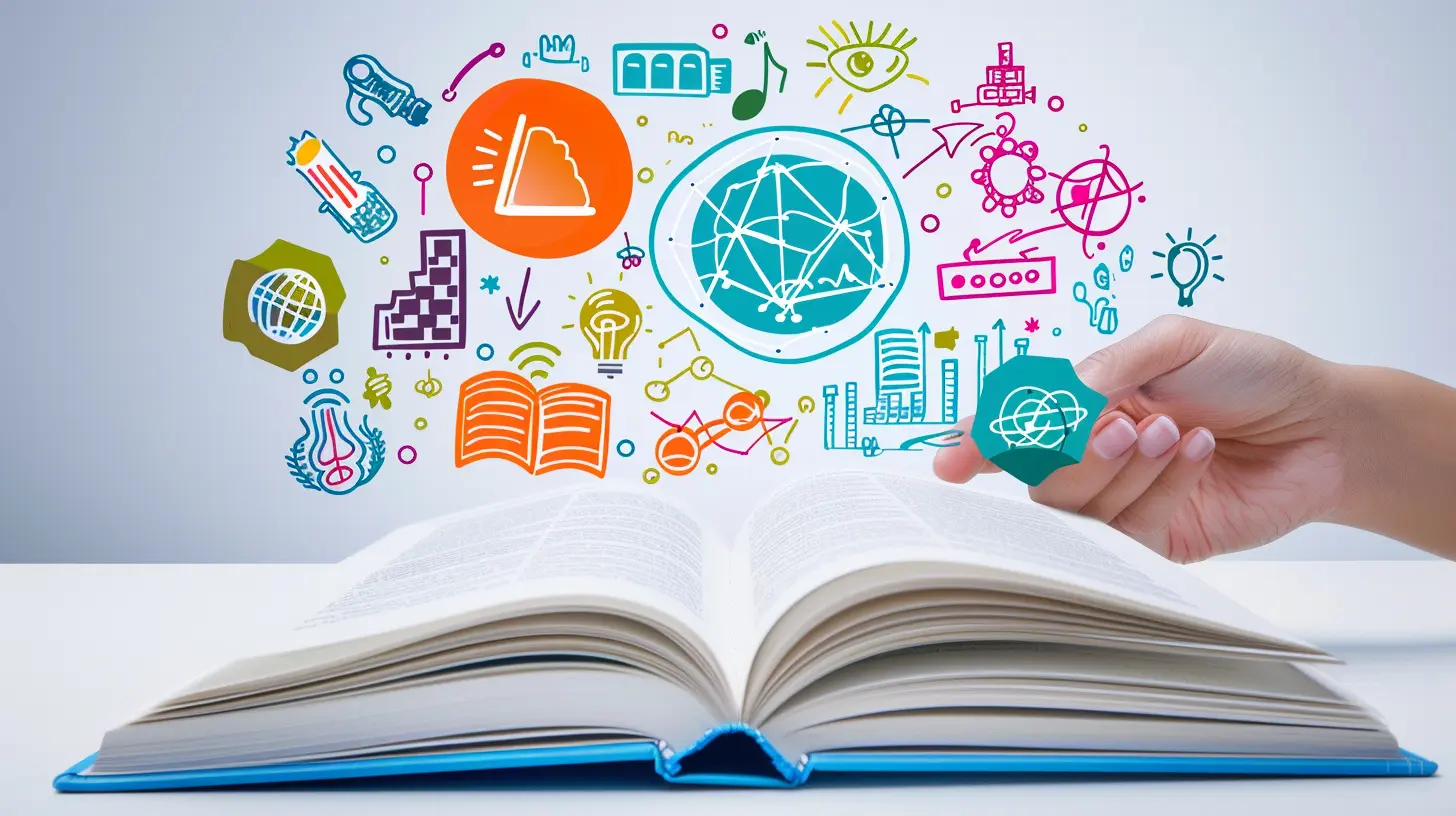The Role of Technology in Innovative Curriculum Development
10 July 2025
Alright, let’s talk about something that’s completely transforming the world of education — and no, it’s not more homework (thankfully!). We’re diving into the exciting intersection of tech and teaching: the role of technology in innovative curriculum development.
Now, we know “curriculum development” sounds like a dry, academic term. Kind of like something you say when you’re trying to impress someone at an education conference. But stick with me here. When you throw technology into the mix, it actually becomes pretty fascinating — and dare I say, fun!
So grab your favorite cup of coffee (or tea, no judgment here), and let’s unpack how technology is not just enhancing learning but flipping the entire curriculum design process on its head — in the best way possible.
The Curriculum: What It Used to Be vs. What It Can Be
Let’s rewind a bit. Traditionally, curriculum development was a super linear process. You’d have a committee, some dusty textbooks, a list of standards, and voilà — education for the next decade. It was static, one-size-fits-all, and honestly, a little uninspired.Fast forward to today. With so much tech at our fingertips, the curriculum has gone from being a fixed blueprint to a dynamic, living, breathing thing. Think less “instruction manual” and more “interactive app that updates overnight.”
Technology isn’t just a support system anymore. It’s the engine driving transformation.
Why Traditional Curriculum Needs a Tech Makeover
Let’s be real. The world is changing at lightning speed. If we're preparing students for jobs that don’t even exist yet, shouldn’t the way we build curricula evolve too?Here’s the thing: traditional curriculum development often lags behind. By the time a new course is designed, approved, and distributed, the content may already be outdated. Enter technology — a shiny beacon of adaptability and innovation.
With tech, you can:
- Update content frequently and easily
- Personalize learning experiences
- Offer interactive and engaging content
- Use data to track what’s working and what’s not
It’s like switching from a flip phone to a smartphone: once you’ve experienced the difference, there’s no going back.
Technology as a Creative Partner in Curriculum Design
When we think about curriculum, we often focus on the "what" — subjects, standards, outcomes. Technology helps us shift focus to the "how" — how we deliver knowledge, how we engage students, and how we adapt based on feedback.Let’s break it down a bit.
1. Data-Driven Decisions
With tech tools like Learning Management Systems (LMS), we can collect staggering amounts of data. And no, not the creepy kind. We’re talking about meaningful insights — what topics students struggle with, how much time they spend on a lesson, which quizzes they bombed (hey, it happens).This kind of data helps educators fine-tune curriculum elements — tweak a concept here, adjust pacing there — to better meet learners’ needs.
2. AI-Powered Personalization
Artificial Intelligence isn’t just for self-driving cars or beating humans at chess. AI can also personalize learning paths based on students’ skills, progress, and preferences.Imagine a math lesson that adapts in real-time, giving extra practice problems to one student and challenge questions to another — all without the teacher manually intervening. That’s not sci-fi anymore; that’s AI in action.
3. Interactive Content & Gamification
Remember when learning meant staring at a chalkboard for an hour? Yeah, we’ve upgraded since then.Tech brings in elements like:
- Simulations
- Augmented reality (AR)
- Educational games
- Interactive videos
All of these help keep students engaged and make content less like a lecture and more like an experience. And let’s be honest: when learning feels like play, everyone wins.
Collaboration is the New Norm
Thanks to cloud-based tools, curriculum development is no longer a solo mission. Teachers, curriculum designers, students, and even parents can collaborate in real-time.Platforms like Google Workspace, Microsoft Teams, and education-specific tools like Padlet and Kahoot! are making it easier to co-create content, give feedback, and share resources instantly — whether you're in the same room or across the globe.
This level of collaboration adds layers of richness and diversity to curriculum design that just wasn’t possible before.
Real-World Learning with Real-World Tools
Let’s talk real-world prep. The classroom should be a mini-lab for the future workplace, right?With technology integrated into the curriculum, students can:
- Learn coding through platforms like Scratch or Code.org
- Build digital portfolios using Canva or Wix
- Collaborate on projects using Trello or Notion
- Master presentation skills with tech like Prezi or Google Slides
These aren’t just school tools — they’re life tools. Curriculum that incorporates real-world tech skills sets students up not just to pass tests, but to crush their future careers.
Breaking Barriers to Accessibility
One of the most inspiring ways tech serves curriculum development? Accessibility.Technology empowers inclusive learning in powerful ways:
- Text-to-speech and speech-to-text for students with learning differences
- Closed captions and visual aids for hearing-impaired students
- Translation tools for multilingual learners
- Adjustable interfaces for students with physical disabilities
With the right tech, the curriculum can truly be for everyone. It levels the playing field and creates learning environments where all students can thrive — not as an afterthought, but as a design principle.
Professional Development for Teachers — Keeping Pace with Innovation
Okay, so all this tech sounds amazing, right? But there’s a catch: teachers need support and training to integrate it effectively.Luckily, technology is also stepping up on that front. From online courses and webinars to peer-to-peer sharing communities and interactive tutorials, teachers now have a treasure trove of professional development tools at their fingertips.
With proper support, teachers can become not just users of technology, but innovators of curriculum in their own right.
Challenges Along the Way (It’s Not All Rainbows and Wi-Fi)
Let’s not sugarcoat it — integrating technology into curriculum development isn’t without its bumps.Here are a few hurdles we often bump into:
- Digital divide: Not all schools or students have equal access to devices and internet.- Tech overload: Too many tools can feel overwhelming, especially for educators.
- Security and privacy concerns: Student data has to be managed responsibly.
- Resistance to change: Some educators and institutions are understandably cautious.
But these challenges aren’t deal-breakers. With smart planning, ongoing training, equitable funding, and mindful implementation, they’re entirely manageable. Like a tricky level in a video game, they just need the right strategy.
The Future of Curriculum Development Looks… Like a Sci-Fi Movie (In a Good Way)
Wondering what’s next on the horizon? Get ready, because the future is looking bright — and maybe even a little futuristic.We’re talking about:
- Virtual reality field trips to historical sites or inside the human body
- Blockchain certificates to track learning achievements
- AI curriculum assistants recommending resources in real time
- Real-time global classrooms via holograms or fully immersive telepresence
Sounds crazy? Maybe. But 10 years ago, Zoom class would’ve sounded wild, too. The pace of change is only getting faster — and tech is bringing curriculum along for the ride.
A New Kind of Curriculum is Here — Are We Ready?
Here’s the bottom line: curriculum development is no longer just about textbooks and lesson plans. It’s about creating a flexible, inclusive, engaging, and future-ready learning experience.Technology doesn’t just enhance the curriculum — it transforms it.
As educators, students, and lifelong learners, it’s up to us to embrace these innovations. To be curious. To experiment. To take a few risks in pursuit of something better.
Because when we get it right? We’re not just shaping what students learn. We’re shaping how they think, create, and change the world.
And that’s kind of a big deal.
TL;DR — Quick Recap
- Technology gives curriculum development speed, flexibility, personalization, and interactivity.- Tools like AI, data analytics, AR/VR, and collaborative platforms are reshaping how we teach and learn.
- Challenges exist but can be tackled with intentional planning and support.
- The future of curriculum is exciting, inclusive, and powered by innovation.
So let’s roll up our sleeves, charge our devices, and get building. The future of education is tech-rich — and that’s a great thing.
all images in this post were generated using AI tools
Category:
Curriculum DesignAuthor:

Olivia Chapman
Discussion
rate this article
1 comments
Rebecca Campbell
“Technology in curriculum? Absolutely! Let’s face it: if your lessons don’t sparkle with digital flair, you’re basically serving yesterday’s lunch in a fancy new plate. Upgrade or stay stale!”
July 26, 2025 at 3:44 AM

Olivia Chapman
Thank you for your enthusiasm! Embracing technology is indeed essential for keeping education relevant and engaging. Let's continue to innovate!


